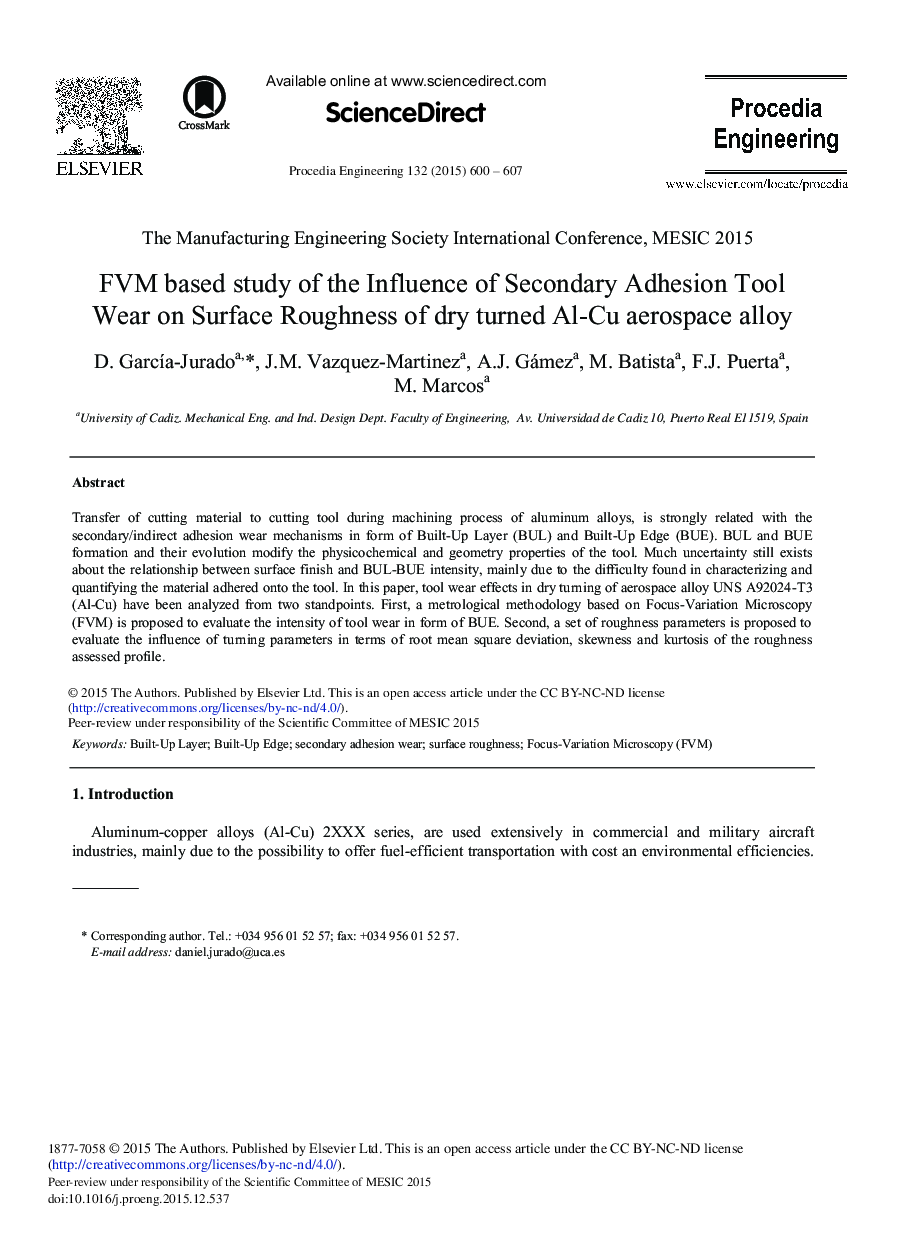| Article ID | Journal | Published Year | Pages | File Type |
|---|---|---|---|---|
| 854163 | Procedia Engineering | 2015 | 8 Pages |
Transfer of cutting material to cutting tool during machining process of aluminum alloys, is strongly related with the secondary/indirect adhesion wear mechanisms in form of Built-Up Layer (BUL) and Built-Up Edge (BUE). BUL and BUE formation and their evolution modify the physicochemical and geometry properties of the tool. Much uncertainty still exists about the relationship between surface finish and BUL-BUE intensity, mainly due to the difficulty found in characterizing and quantifying the material adhered onto the tool. In this paper, tool wear effects in dry turning of aerospace alloy UNS A92024-T3 (Al-Cu) have been analyzed from two standpoints. First, a metrological methodology based on Focus-Variation Microscopy (FVM) is proposed to evaluate the intensity of tool wear in form of BUE. Second, a set of roughness parameters is proposed to evaluate the influence of turning parameters in terms of root mean square deviation, skewness and kurtosis of the roughness assessed profile.
